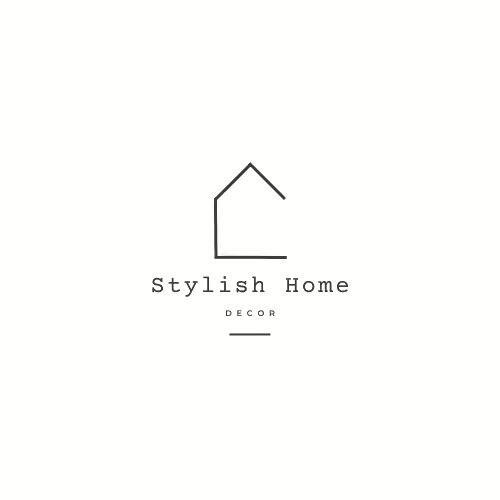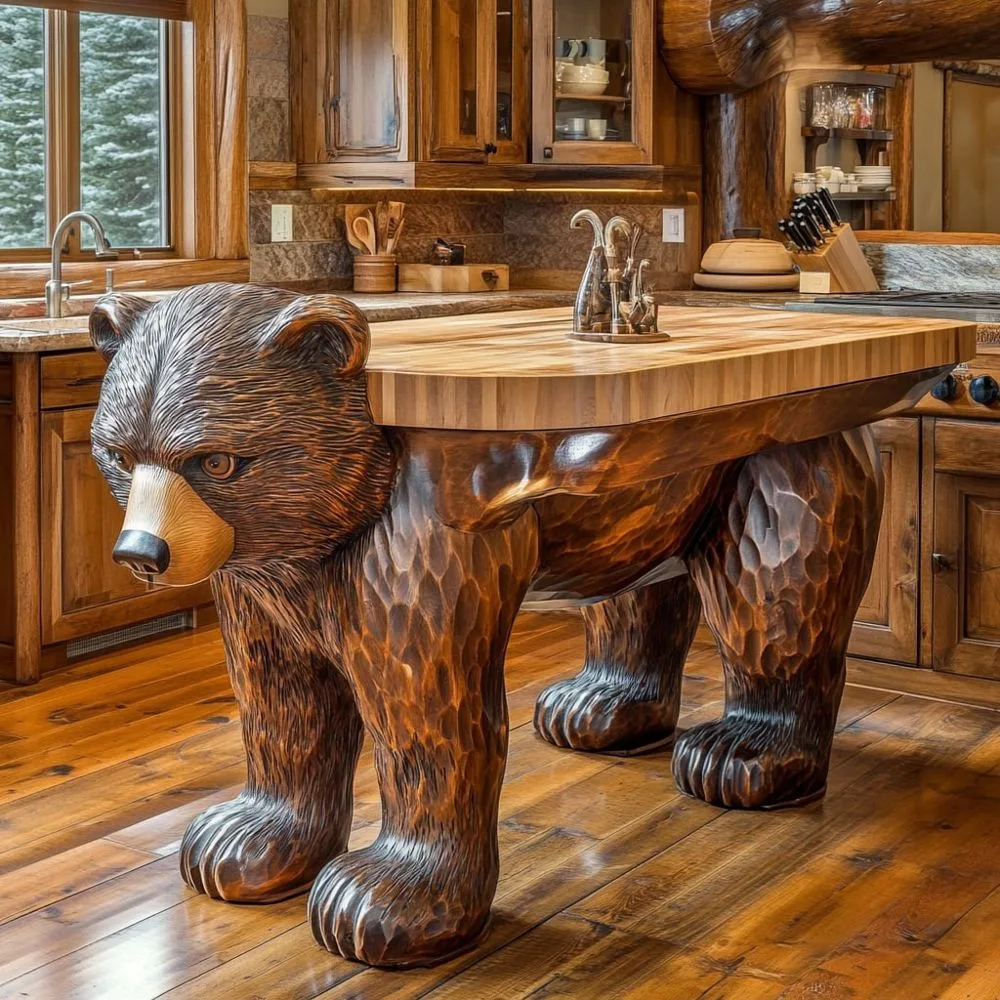The kitchen has evolved from a purely functional space to the heart of the home—a place where design meets utility, where families gather, and where homeowners express their personality. In recent years, one trend has been making waves in luxury kitchen design circles: bear-shaped kitchen islands. These distinctive statement pieces combine whimsical charm with practical functionality, transforming ordinary kitchens into extraordinary spaces that spark conversation and delight.
Bear-shaped kitchen islands represent the perfect marriage of artistic expression and culinary practicality. Whether you’re a wildlife enthusiast, looking to bring a touch of nature indoors, or simply seeking a truly unique centerpiece for your kitchen renovation, these creative installations offer something truly special that traditional rectangular islands simply cannot match.
In this comprehensive guide, we’ll explore the rising popularity of bear-shaped kitchen islands, their various design options, practical considerations, and why they might be the perfect addition to your home. From rustic cabin aesthetics to sleek contemporary interpretations, we’ll examine how these ursine-inspired fixtures are changing the landscape of kitchen design.
The Rise of Animal-Inspired Kitchen Design
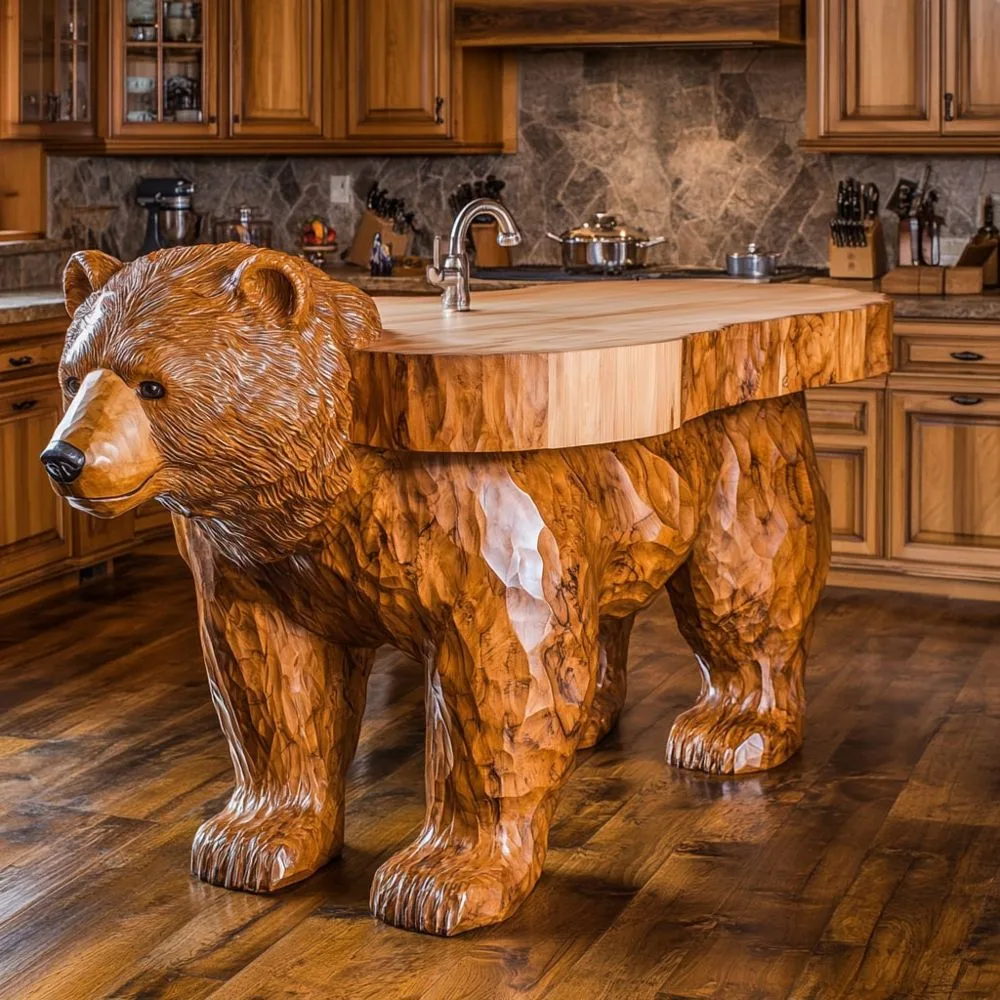
How Bear Islands Became a Trend
The journey of bear-shaped kitchen islands from novelty to legitimate design trend reflects broader shifts in interior design philosophy. As homeowners increasingly seek personalization and unique elements in their living spaces, designers have responded with increasingly creative solutions.
The trend can be traced back to the growing popularity of statement pieces in home design. While standard kitchen islands have been staples for decades, the desire for distinctive, conversation-starting elements has pushed designers to think outside the box—or in this case, outside the rectangle.
Wildlife-inspired design elements have been gaining traction across various aspects of home decor, from animal-print fabrics to nature-themed artwork. Bear-shaped islands represent the natural evolution of bringing the outdoors inside, particularly appealing to those with connections to mountain living, cabin aesthetics, or simply an appreciation for wildlife.
Celebrities and Influencers Leading the Charge
Several high-profile kitchen renovations have featured bear-shaped islands, catapulting the trend into the spotlight. Design influencers and home renovation shows have showcased these statement pieces, demonstrating how they can become the focal point around which the entire kitchen design revolves.
Social media platforms like Instagram and Pinterest have further amplified the trend, with hashtags like #BearIsland and #WildlifeKitchen generating thousands of posts showcasing these unique installations in various settings, from rustic cabins to ultra-modern urban apartments.
Design Variations of Bear-Shaped Kitchen Islands
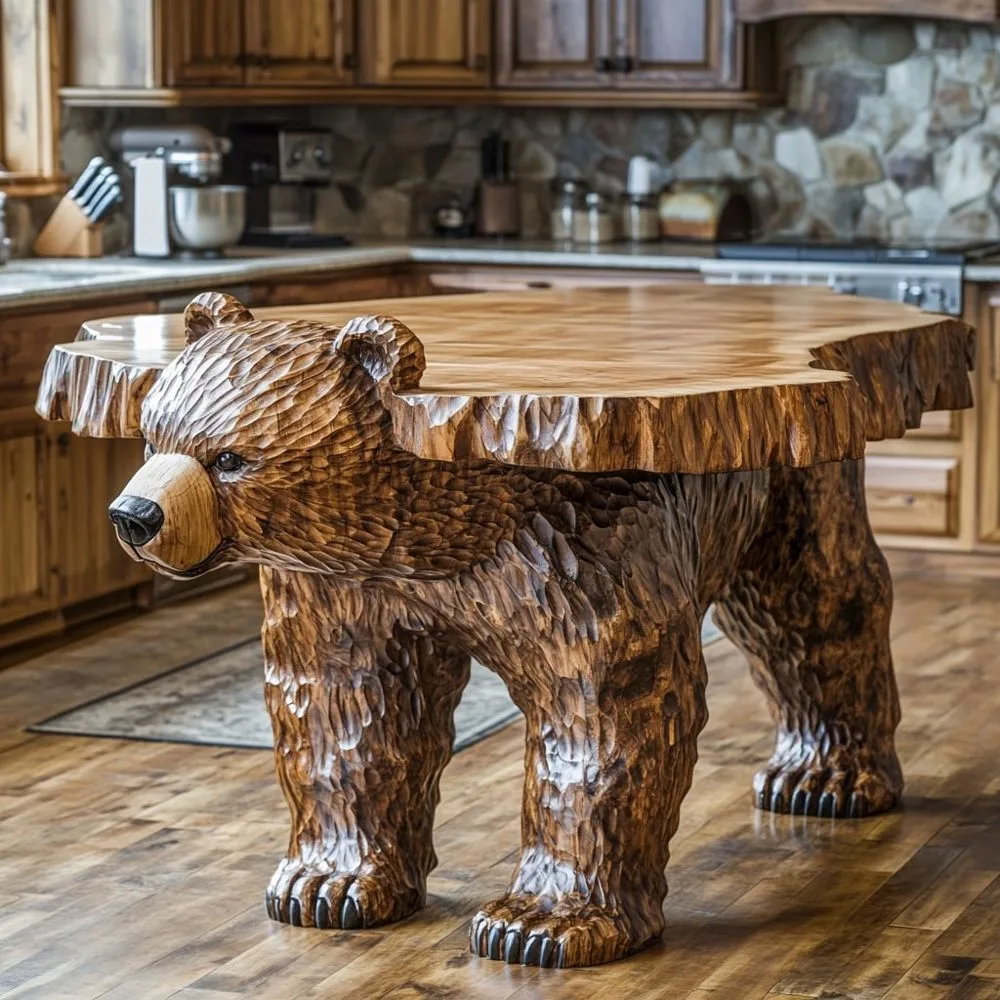
Realistic vs. Stylized Approaches
Bear-shaped kitchen islands come in various interpretations, ranging from highly realistic representations to more abstract, stylized designs. The realistic approach aims to capture the essence of a bear in detail—complete with recognizable features like paws, snout, and ears—while stylized versions may take more creative liberties, suggesting the bear form through basic shapes and contours.
The choice between realistic and stylized often depends on the overall aesthetic of the kitchen. Realistic designs tend to work well in rustic, cabin-inspired settings, while stylized interpretations can complement more contemporary spaces.
Materials and Finishes
Wood Options
Wooden bear islands are perhaps the most common, with various species offering different aesthetic qualities:
- Oak: Provides durability and a pronounced grain pattern
- Walnut: Offers rich, dark tones for a more sophisticated look
- Pine: Creates a rustic, cabin-like feel
- Reclaimed wood: Adds character and sustainability credentials
Many wooden bear islands feature hand-carved details, showcasing the craftsmanship involved in their creation.
Stone and Concrete
For a more contemporary take, stone and concrete bear islands offer durability and a sleek aesthetic:
- Granite: Provides natural patterning and heat resistance
- Quartz: Offers consistency in color and low maintenance
- Polished concrete: Creates an industrial-chic appearance
Stone bear islands often combine the natural material with wood accents, marrying the organic form with natural materials.
Mixed Media Approaches
Some designers opt for mixed media bears, incorporating:
- Metal accents for claws or facial features
- Glass elements for eyes or decorative inlays
- Backlit features for dramatic evening lighting
These combinations allow for personalization while maintaining the central bear theme.
Color Schemes and Finishing Touches
While natural wood tones remain popular, more adventurous homeowners are exploring colorful options:
- White or black bears: For minimalist spaces
- Blue or green tints: To create a fantasy woodland feel
- Metallic accents: Adding luxury touches through gold or copper details
Finishing touches like custom handles shaped like bear paws or special lighting to highlight the sculptural qualities of the island can elevate the design further.
Practical Considerations for Bear-Shaped Kitchen Islands
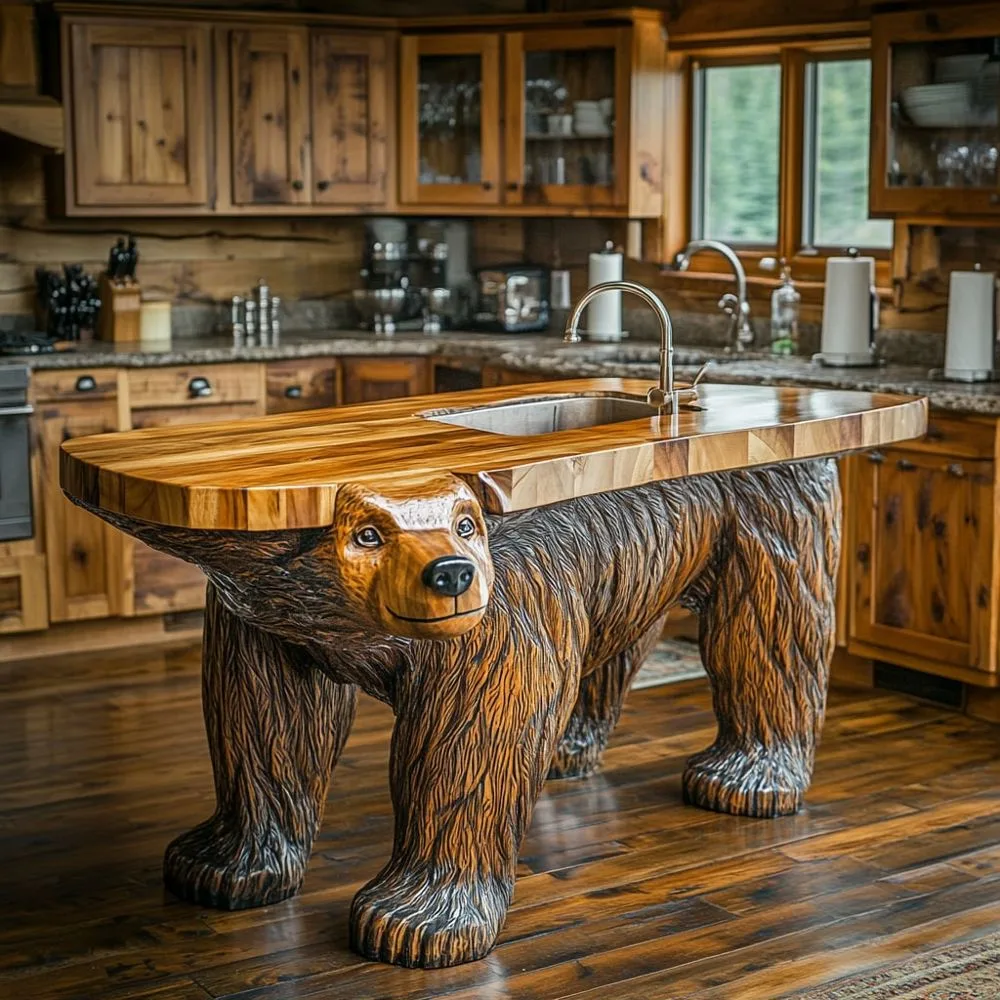
Functionality and Space Planning
While aesthetics are important, a kitchen island must first and foremost be functional. Bear-shaped islands need to accommodate typical kitchen activities:
- Counter space: Despite the unique shape, sufficient flat surface area is essential
- Storage solutions: Drawers and cabinets integrated into the “body” of the bear
- Seating arrangements: Thoughtfully designed to work with the organic shape
Designers typically map out the most active areas of the kitchen when planning bear islands, ensuring the island enhances rather than impedes workflow.
Size and Scale Considerations
The size of the bear island should be proportionate to the kitchen space. Too large, and it becomes overwhelming; too small, and it loses impact. Professional designers recommend:
- Maintaining at least 36-42 inches of clearance around all sides of the island
- Considering ceiling height when designing vertical elements
- Ensuring the island’s footprint allows for comfortable movement throughout the kitchen
Many homeowners opt for scale models or cardboard templates to visualize the bear island in their space before committing to installation.
Cost Factors
Bear-shaped kitchen islands typically represent a premium investment in kitchen design:
- Custom craftsmanship: Hand-carved wooden bears can cost significantly more than standard islands
- Materials: High-quality woods and stones add to the price
- Installation complexity: Specialized installation may be required
- Design fees: Custom design work adds to the overall budget
While prices vary widely depending on materials, size, and detail level, homeowners should expect to invest substantially more than they would for conventional islands.
Benefits of Bear-Shaped Kitchen Islands
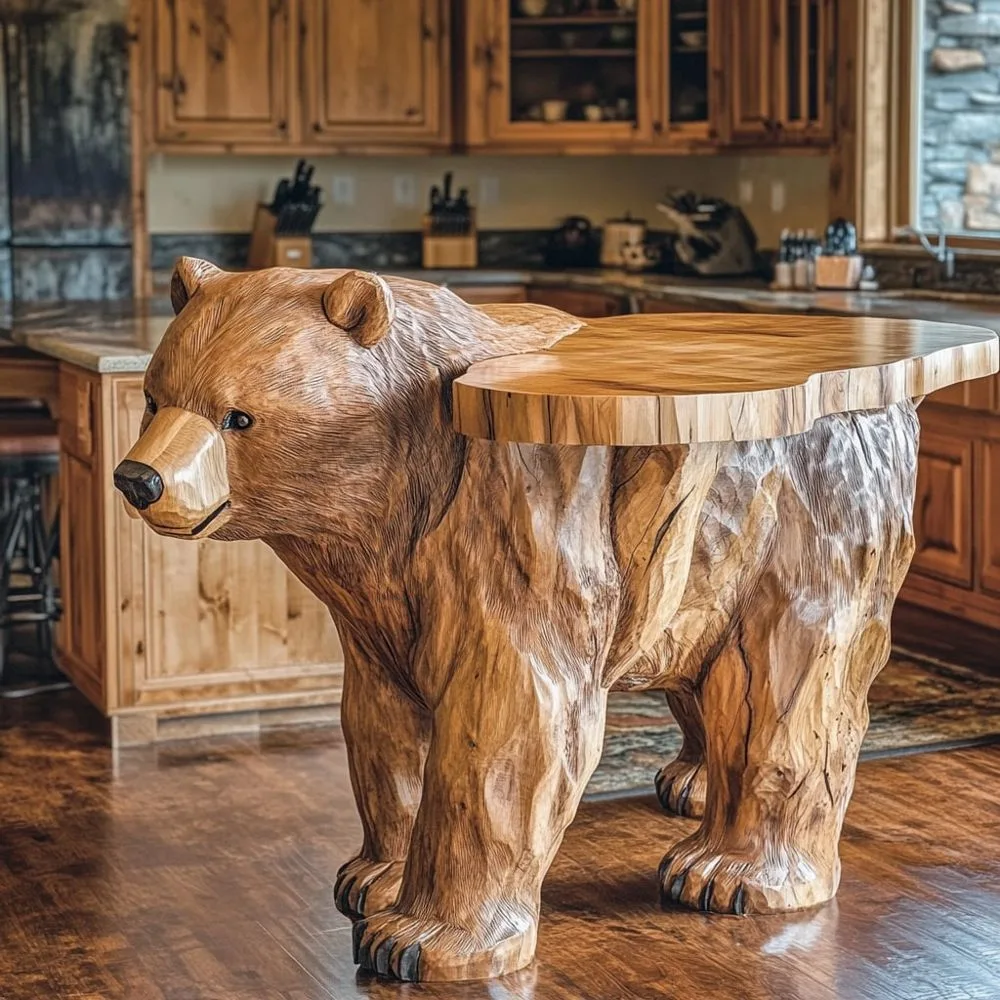
Conversation Starter and Focal Point
Perhaps the most obvious benefit of a bear-shaped kitchen island is its ability to serve as a memorable conversation piece. Guests invariably comment on these unique installations, making them perfect for homeowners who love to entertain.
The island naturally becomes the focal point around which the entire kitchen design revolves, allowing other elements to play supporting roles while the bear takes center stage.
Personalization and Emotional Connection
For many homeowners, bear islands represent a personal connection to nature, wildlife, or cherished memories:
- Outdoor enthusiasts: May choose a bear island to bring their love of nature indoors
- Cabin owners: Might select a bear design that complements their rustic aesthetic
- Wildlife advocates: Could see the island as a celebration of wildlife conservation
This emotional resonance transforms the kitchen from a purely functional space to one that tells a story about the homeowners’ values and interests.
Potential Impact on Home Value
While design trends come and go, truly unique features can set a home apart in the real estate market:
- Memorability: Homes with distinctive features tend to be remembered by potential buyers
- Luxury positioning: Unique custom elements can help position a home in the luxury market
- Target audience appeal: For the right buyer, a bear island could be the deciding factor
However, it’s worth noting that highly personalized features can sometimes limit appeal to a broader market, so homeowners should consider their long-term plans when investing in such a distinctive element.
Installation and Maintenance For Your Bear-Shaped Kitchen Island
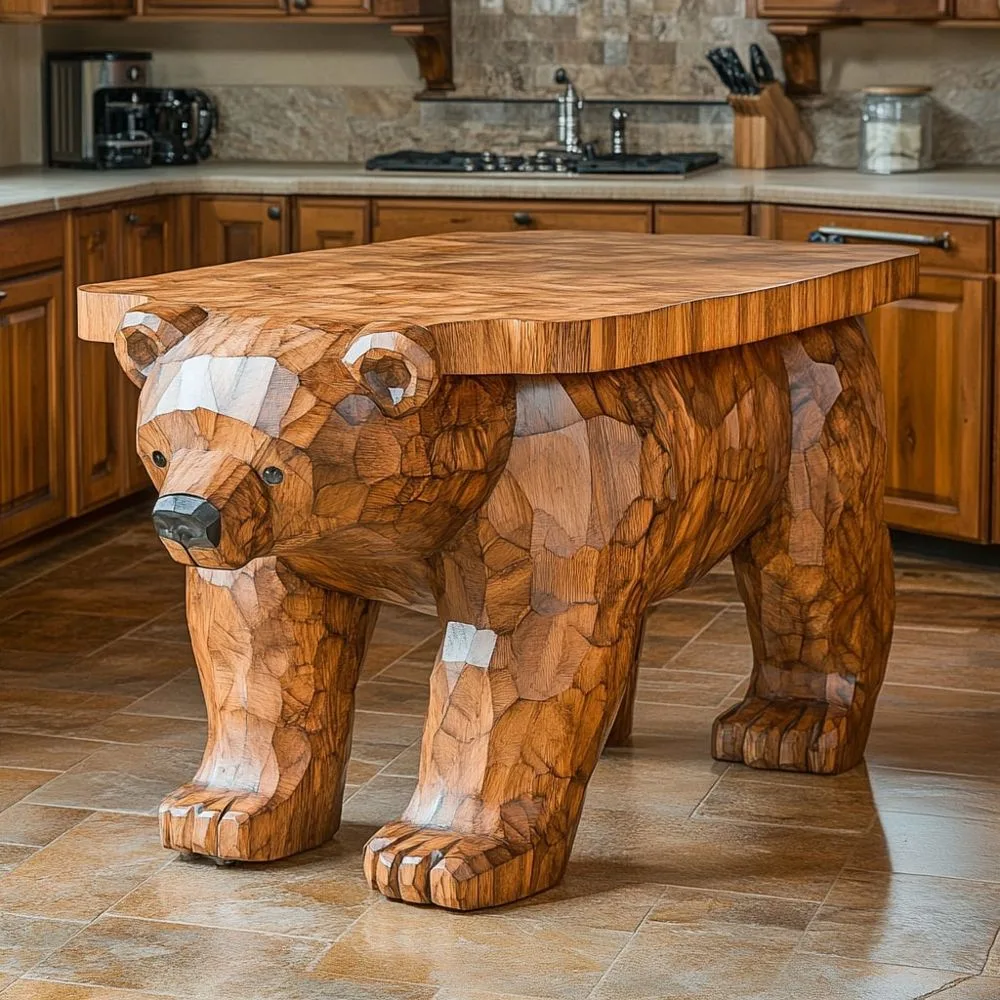
Working with Professionals
Due to the complexity of bear-shaped islands, professional involvement is typically necessary:
- Specialized designers: With experience in animal-shaped furniture
- Master carpenters: For wooden bear islands
- Stone fabricators: For granite or quartz implementations
- Interior designers: To ensure the bear island integrates with the overall kitchen design
Many homeowners find that collaborative design sessions, involving multiple professionals, yield the best results.
Maintenance Requirements
Different materials require different maintenance approaches:
- Wooden bears: Need regular oiling or sealing to maintain appearance
- Stone surfaces: Require appropriate cleaners and periodic resealing
- Moving parts: Any hinges or mechanisms need regular checking
- Specialty finishes: May have specific care instructions
Most fabricators provide detailed maintenance guides specific to the materials and finishes used in each bear island.
Styling Around Your Bear-Shaped Kitchen Island
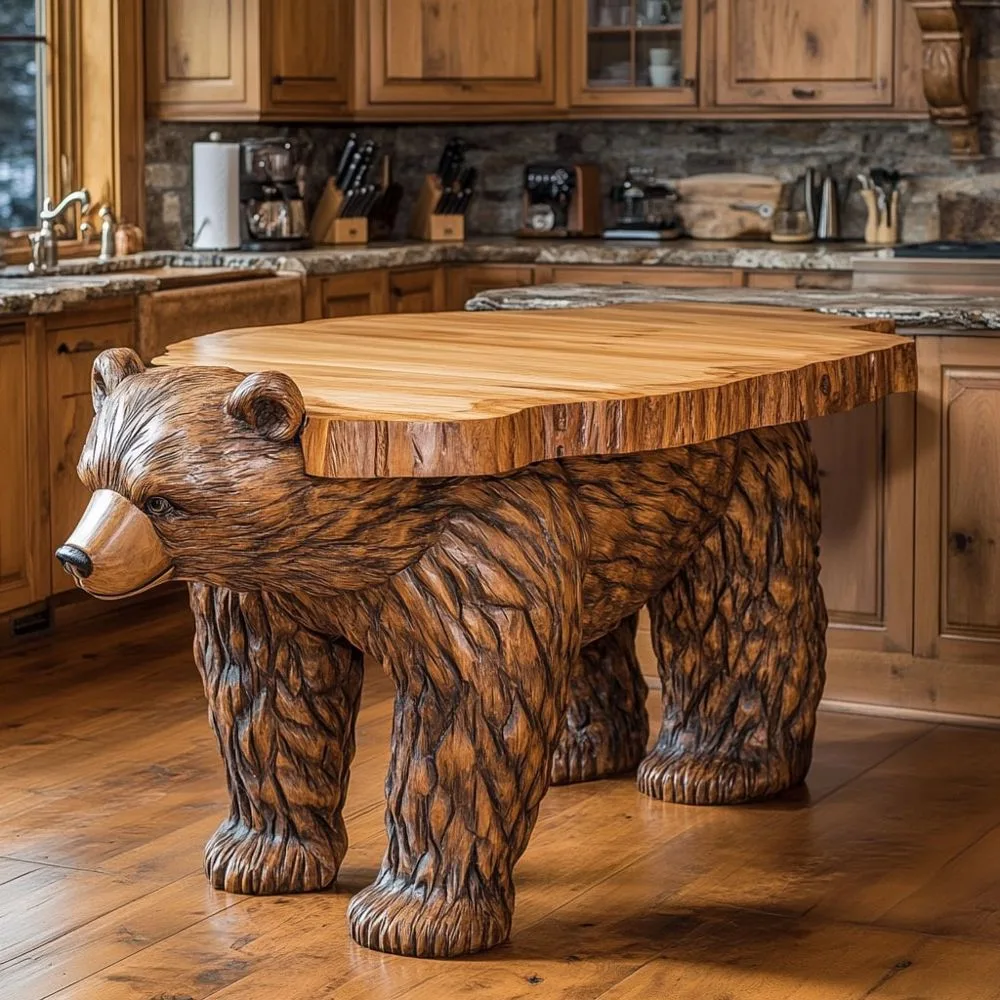
Complementary Design Elements
To create a cohesive bear-shaped kitchen island design around a bear island:
- Lighting: Consider pendant lights that highlight the sculptural quality
- Flooring: Choose materials that complement but don’t compete with the island
- Cabinetry: Often works best in simpler styles that let the island shine
- Hardware: Can echo themes from the bear (paw prints, nature motifs)
The goal is to create balance, allowing the bear to be the star without making the kitchen feel themed or overly whimsical.
Avoiding Design Overload
With such a strong statement piece, restraint elsewhere is key:
- Keep surrounding elements relatively simple
- Choose a cohesive color palette that complements the bear
- Avoid competing patterns or textures that might clash
- Consider the bear island as the “jewelry” of the kitchen
Professional designers often recommend the “remove one thing” approach—styling the kitchen and then removing one decorative element to prevent visual clutter.
Bear Islands in Different Kitchen Styles
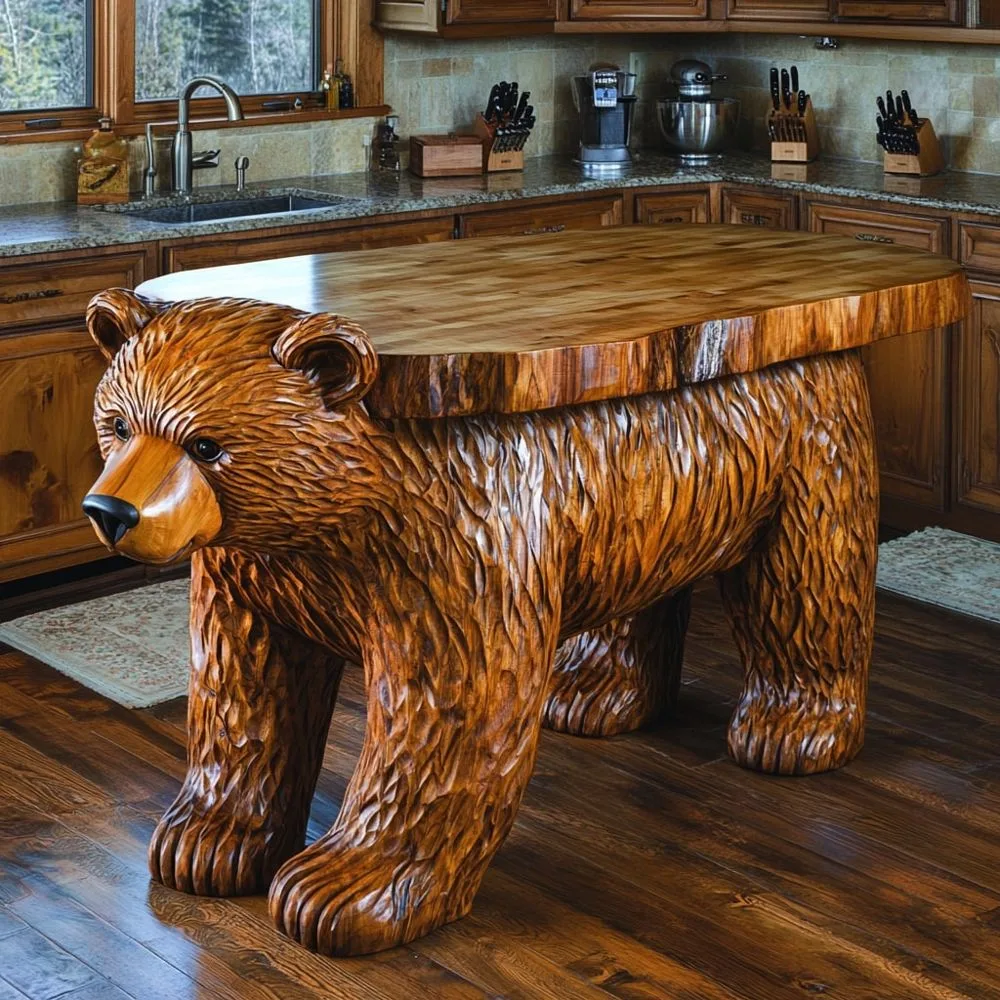
Rustic and Cabin Aesthetics
Perhaps the most natural fit for bear islands, rustic kitchens embrace the wildlife theme:
- Pair with exposed beams and natural stone
- Complement with wrought iron fixtures
- Enhance with earthy color palettes
- Consider antler-inspired accessories
The bear becomes an extension of the outdoor-inspired design philosophy.
Contemporary Interpretations
Modern kitchens can also incorporate bear islands through:
- More abstract, geometric interpretations of the bear form
- Sleek materials like polished concrete or quartz
- Minimalist color schemes
- Clean lines elsewhere in the kitchen
The contrast between the organic bear shape and contemporary elements creates a compelling design tension.
Transitional and Eclectic Spaces
Transitional kitchens blend traditional and modern elements:
- Bear islands can bridge these styles
- Mix traditional craftsmanship with contemporary finishes
- Combine warm woods with cool metals
- Layer textures for visual interest
In eclectic spaces, bear islands can be one of several unique elements that work together to create a personalized kitchen.
Conclusion
Bear-shaped kitchen islands represent the perfect intersection of functional design and personal expression. Far from being merely whimsical, these statement pieces offer practical benefits while creating truly unique spaces that reflect the personalities and passions of their owners.
Whether you’re drawn to the rustic charm of a hand-carved wooden bear or the sleek sophistication of a contemporary interpretation, a bear-shaped island transforms an ordinary kitchen into an extraordinary one. It creates a space where family and friends naturally gather, where conversations start effortlessly, and where the heart of your home truly reflects what matters to you.
As we continue to seek personalization in our living spaces, distinctive elements like bear-shaped islands remind us that our homes can be both functional and joyful—practical and playful. They encourage us to think beyond the standard rectangular island and consider how our kitchens might better express our unique perspectives.
If you’re considering a kitchen renovation, a bear-shaped island might be the perfect way to create a space that’s unmistakably yours—a kitchen that not only meets your needs but also brings a smile to your face every time you enter it.
